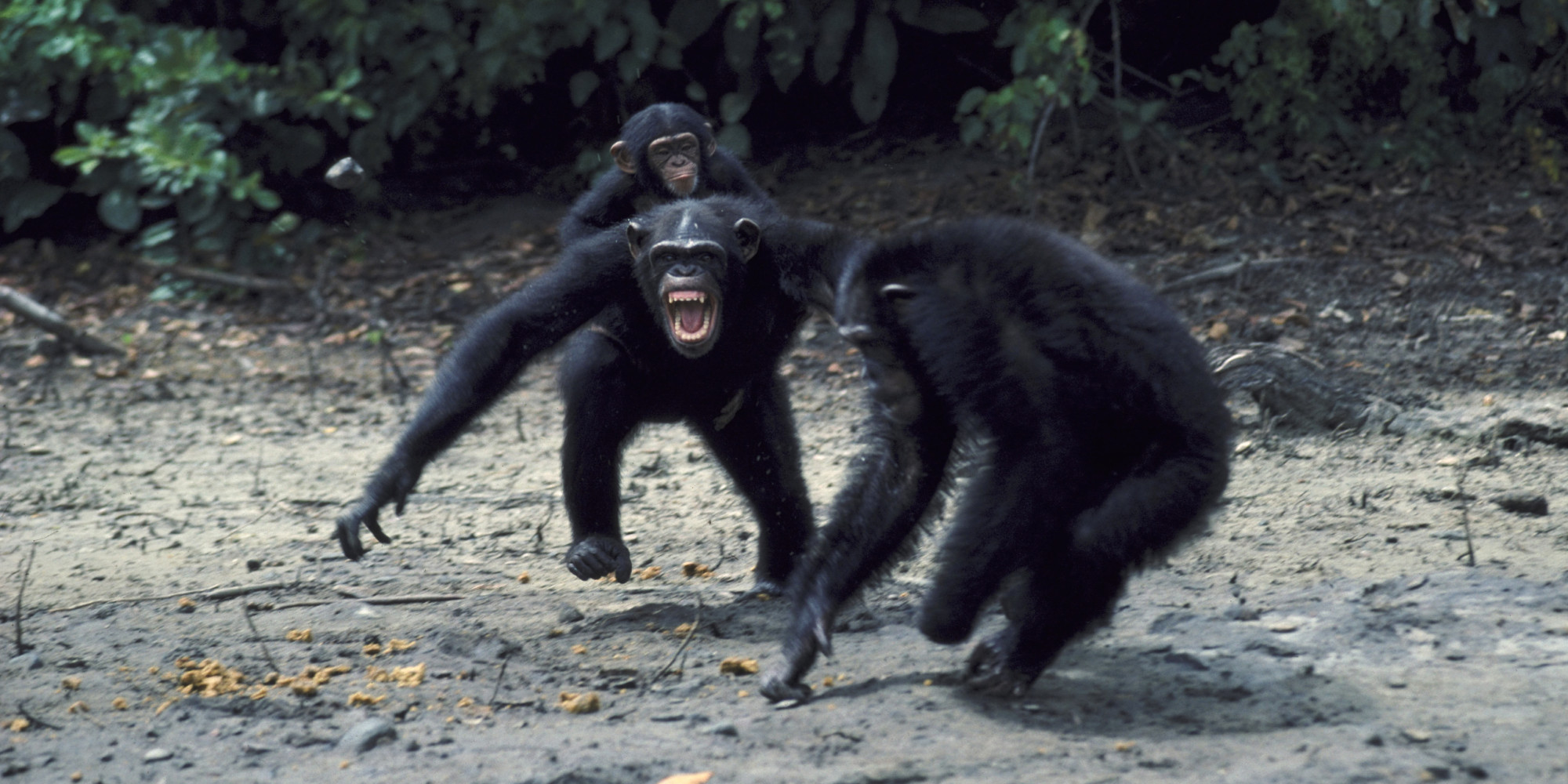

This alpha male can and does eat with the elder females. Despite the maternal-centric nature of their culture, each community does typically have one alpha male that protects the group, leads foraging parties, and helps to determine when, where, and what to eat. Unlike most great ape species, the Bonobos live in a matriarchal society where a select group of elder females has the final say on where the group travels when they eat and other important decisions. They also use hand gestures to convey meaning and there are examples of Bonobos using these signals to communicate with humans. Indeed, the same sounds can mean many different things depending upon the context.

#BONOBO VS CHIMPANZEE FIGHT SERIES#
Their communication includes a series of sounds that other apes must translate based upon current surroundings. They also display compassion and empathy to wounded members of their communities.īonobos are also highly intelligent. They have been recorded as showing altruistic tendencies and a willingness to share food, shelter, and necessities with other Bonobos. They are known for their long legs and for the fact that they keep their tail tufts even as adults.īonobos overall act peacefully in the wild. They stand between 28 and 35 inches and can weigh anywhere between 65 and 85 pounds. The Bonobo’s head is generally flatter and smaller than other great apes. Their lips are bright pink or red, which gives them a distinct look. See all of our entertaining and insightful animal articles.īonobos, or pygmy chimpanzees, are animals with dark brown or black fur with darker faces. Silverback Gorilla Weight: Their Size Explained.Chimpanzee Lifespan: How Long Do They Live?.Monkey Lifespan: How Long do Monkeys Live?.Chimpanzee vs Human: Who Would Win in a Fight?.10 Animals with Opposable Thumbs – And Why It’s So Rare.Bili Apes: The Largest Chimpanzee Ever?.The other species is the common Chimpanzee or Pan troglodytes. It is one of only two living species in the Pan genus. The Bonobo’s scientific name is Pan paniscus. Use the same sound or call to mean different things depending upon the context or situation.Can jump up to 27.5 inches into the air, while the average human has a 16-to-24-inch vertical jump.One of two species in the Pan genus along with the common Chimpanzee.First discovered in 1929 and did not become a separate species until the 1950s.Share 98.7% of their genome with humans, which makes them one of our closest living relatives.These numbers are expected to dwindle even further as humans destroy more and more of their natural habitat. As of 2020, only between 10,000 and 50.000 of these apes are known to exist in the wild. Female Bonobos reach sexual maturity around 12 years of age and will then seek out a mate to form their own subgroup within the colony.ĭeforestation and poaching have severely impacted the Bonobo population in central Africa. Male offspring typically stay with their mothers throughout their lives. This species generally lives in a matriarchal society of up to 100 individual apes. One of its most distinctive features is a tail tuft that the Bonobo keeps throughout its adult lives. Its fur may turn silvery gray in older members of the colony. The Bonobo has pink or red lips and 32 teeth. The bonobo is an animal that generally features dark brown or black fur and whiskers that hide its ears. While like the chimpanzee, this species has a flatter and smaller head, longer legs, and a slender body. In fact, these great apes were not classified as their own species, separate from the common chimpanzee, until 1954. Bonobos, first discovered in the 1920s, were originally referred to as the pygmy Chimpanzee.


 0 kommentar(er)
0 kommentar(er)
